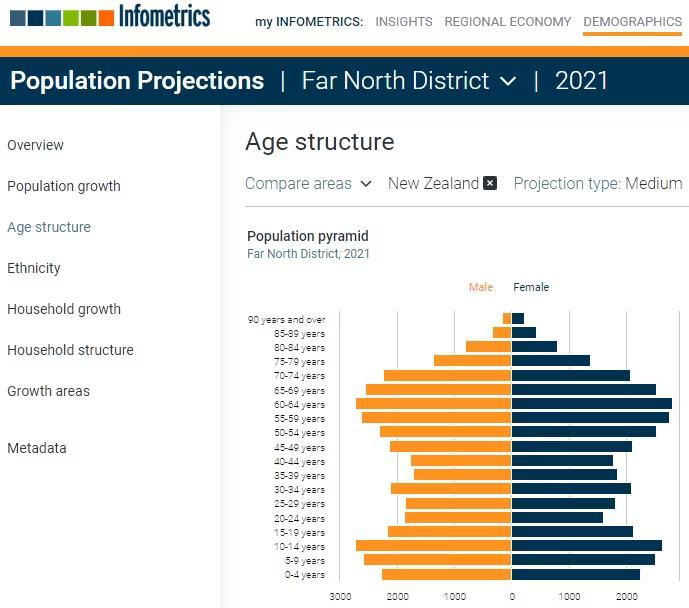
Media Release: New population projections show regions will need to change how they plan for population growth
New population projections from Infometrics suggest that national population growth will slow, and that this trend will be reflected across most regions, which will require even more focus on planning properly for the future.
The new population projections are contained in a new Population Projections service that Infometrics is launching to support better informed planning for the future. “Alongside this lower rate of population growth, shifts in growth rates across different age groups will mean that most regions will need to change how they plan for population growth,” says Infometrics Senior Economist Nick Brunsdon.
“The Infometrics Population Projections are unique in that they are driven by our regional employment forecasts as well as the traditional demographic drivers. We know that people will be drawn to regions where there are job opportunities and we factor these trends into our projections,” says Mr Brunsdon.
A softer outlook for both net international migration and natural population increase means population growth will be slower in the next decade than the past decade. New Zealand’s population growth is projected to slow from an annual average of 1.6% in the past decade (2011-2021) to 0.9% in the next decade (2021-2031). This pattern of slowing down is expected in almost every region. Despite the slowdown, growth remains strongest around the Golden Diamond across the upper North Island, with 1.0% or higher growth in Northland, Auckland, Waikato, and Bay of Plenty over the next decade.
“Natural population increase, the difference of births over deaths, is set to slow in the coming decade as the population ages. At the same time, net international migration is expected to be lower than it was pre-pandemic for two reasons: the New Zealand Government’s tighter immigration policies, and fierce competition for skilled workers across most developed nations,” explains Mr Brunsdon.
The 65-years-and-older age group is projected to be the fastest growing in the coming decade, growing by 3.2%pa nationally between 2021 and 2031. The 40-64-year-old population is projected to be the second fastest growing group in the coming decade at 0.9%pa. The 20-39-year-old group is expected to grow by a mere 0.4%pa, and the school aged 0-19-year-old age group is projected to decline 0.1%pa. The aging of the population comes at a time when the current and future workforce is set to be more limited.
“It's important for regional and local councils to understand how these national trends will play out in their region. The dynamics of future population change has implications for the number and types of houses required in a local area, as well the demand infrastructure such as schools, health services, and retirement villages,” says Mr Brunsdon.
These population dynamics also have workforce implications. To meet the skill needs of local employers, councils will increasingly need to find ways to retain and attract younger people to their region, and to ensure older people are able to continue working and reskill if they need to.
ENDS
More information on the Infometrics Population Projections for interested parties can be found on the Infometrics website: https://www.infometrics.co.nz/product/population-projections. More analysis on future population trends can be found in this analysis piece Nick has published today: https://www.infometrics.co.nz/article/2022-10-population-growth-slows-nearly-everywhere-in-2022.










